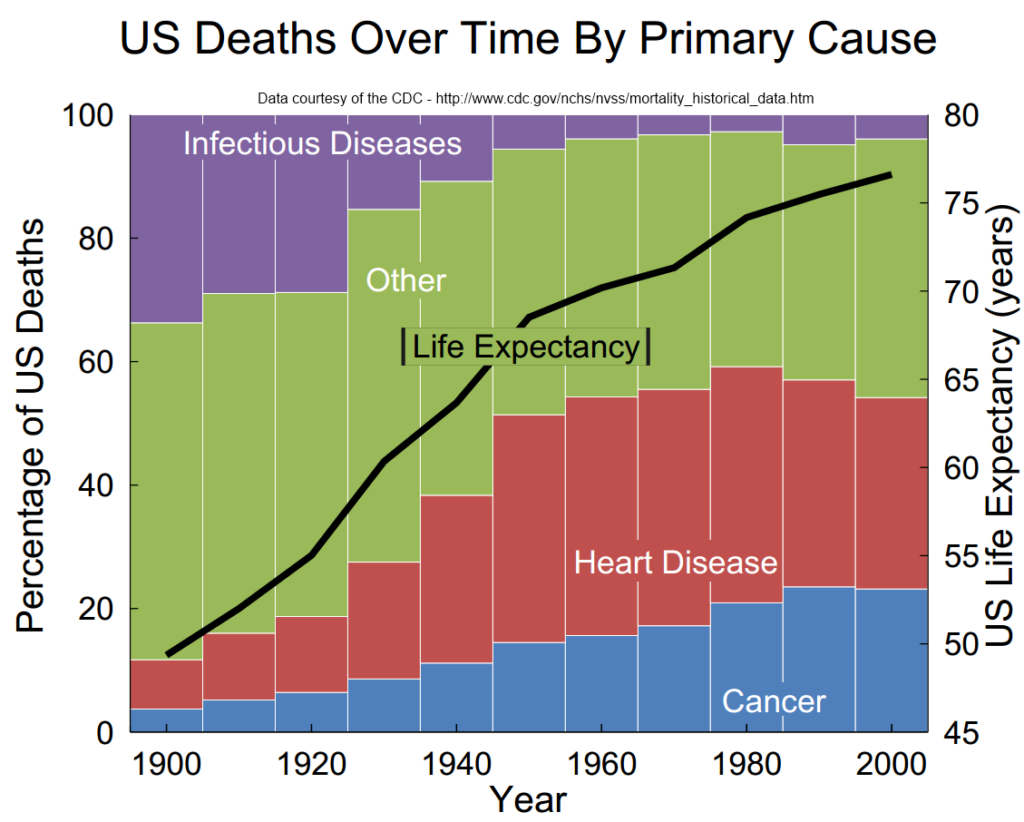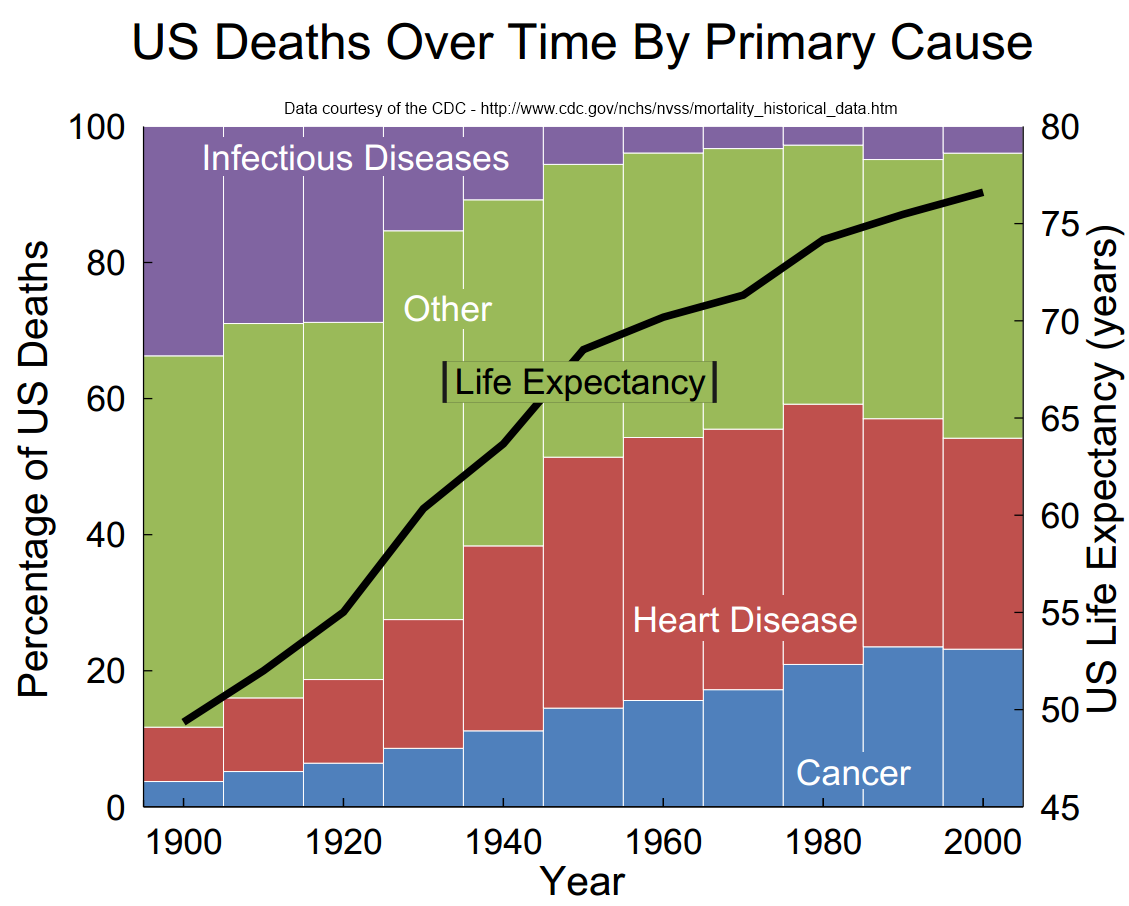The rise of modern medicine: causes of death in the 20th century

In the late 19th century, the main cause of death was infectious disease: Pneumonia, influenza, tuberculosis, enteritis, diphtheria, etc.
With the invention of antiseptic and antibiotic techniques, medicine began to decrease the rate of death due to such diseases, and the life expectancy of US citizens climbed from 50 in the year 1900 to 76 in 1998.
You see here the major causes of death plotted from 1900 to 2000.

- At the top is infectious diseases – anything caused by a bacterial, viral, or other living pathogenic agent. For instance, in 1900, the top 3 causes of death were pneumonia/influenza, tuberculosis, and diarrhea (caused by gastric/intestinal diseases).
- The solid line in the middle of the graph shows the average life expectancy (the values are displayed on the right axis).
- As we became better at curing infectious diseases in the 30’s, 40’s, and 50’s, the life expectancy rose dramatically.
- As the population of the US got older, problems like heart disease and cancer are much more prevalent.
- Cancer is a disease that often comes with old age.
- Or in other words, living longer gives you cancer! 😛
- Ideally, the cancer data would be more helpful if it was normalized for age, but cancer data was not solid before the 1970’s.
- “Other” is things like stroke, car accidents, suicide, chronic lung disease (smoking), and liver disease.
- Source: CDC Historical Data
Note: Life expectancy has risen risen dramatically not necessarily due to modern medicine helping people live longer, but more-so due to modern medicine helping infants survive! It used to be very common for infants to die. The decrease in infant mortality has resulted in an increase in average lifespan. So in other words, back in the day, it was very likely that you were going to live beyond 50 if you survived childhood.






